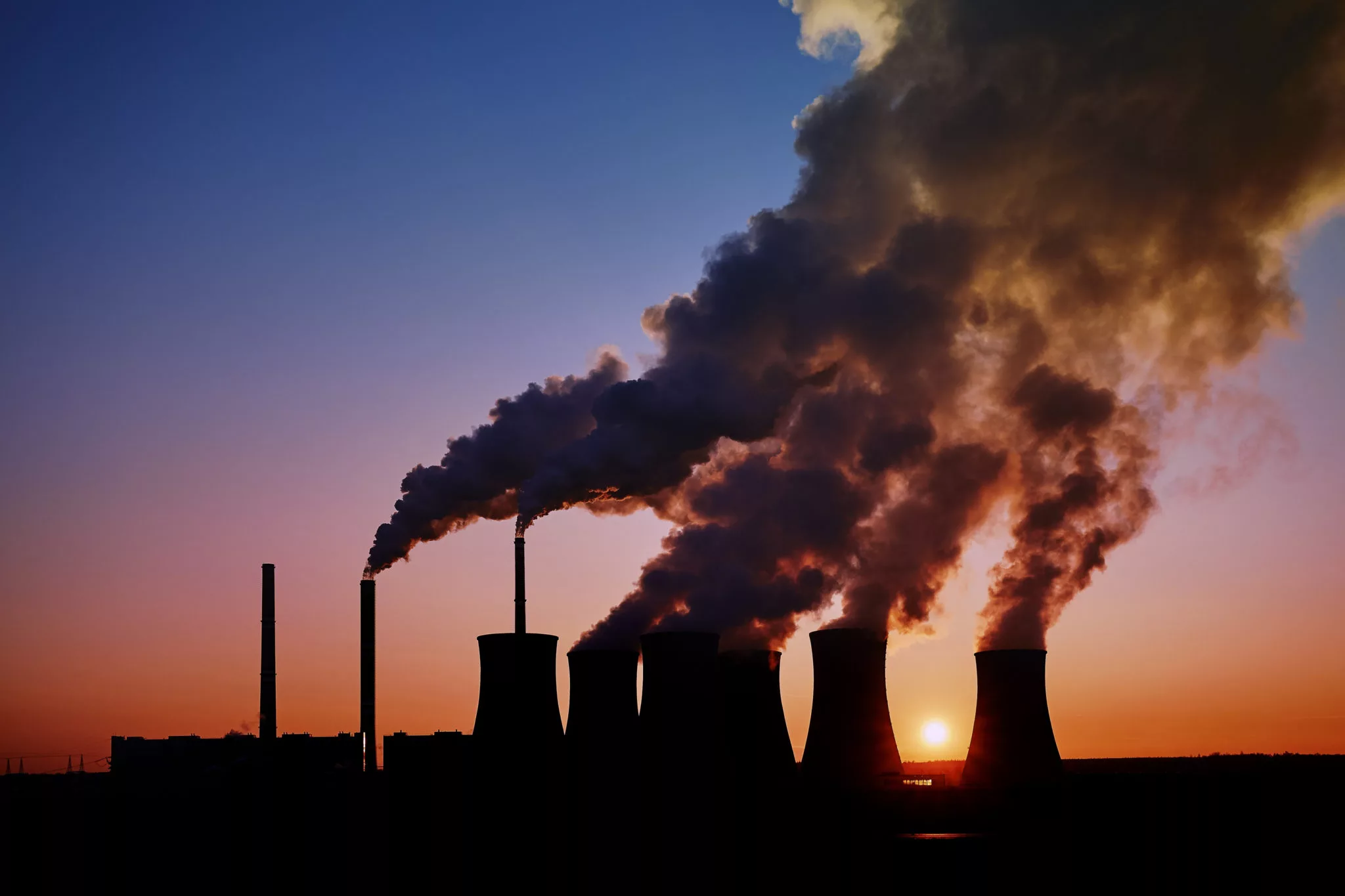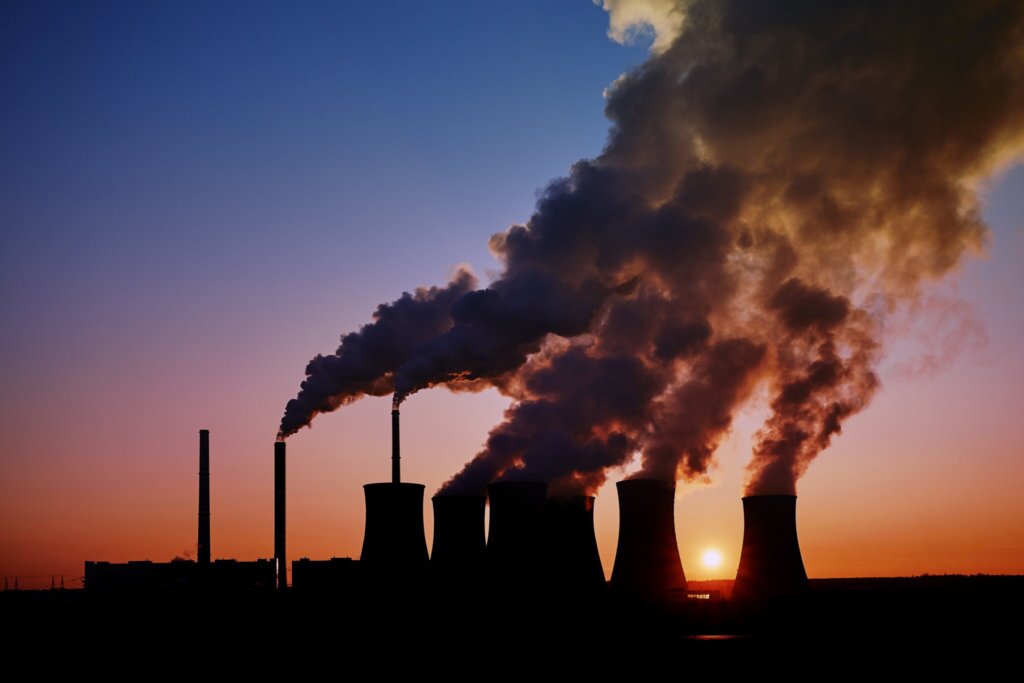
Fossil fuels vs. solar energy? Nonrenewable resources of energy (or fossil fuels) are highly controversial in many ways because of their efficiency for our usage and their extreme environmental impact.
Understanding the origins and processes of using these resources can help us find ways to reallocate our manmade resources that make these productions possible, and the process started many, many years ago.
Coal: Older Than the Dinosaurs
Hundreds of millions of years ago, before even the dinosaurs were around, the Earth was covered by vast swamps with huge plants and ferns. They thrived on their own for about 200 million years until the dinosaurs came around and shifted the landscape.
When these plants died, they sank to the bottom of the swamps they were in, and as years went by, thick layers of the remains of these plants were covered by dirt and swamp water.
Packed down by the weight of the water and dirt plus the weight of millions of years of dinosaurs, the plants were put under extreme pressure. Over the decades and millennia, this pressure with the heat changes turned the plant remains into coal.
We refer to coal as a fossil fuel because it was created by the remains of plants that existed so many years ago.
It took millions of years of that extreme pressure to form, and we cannot make more in any less time, so it is a nonrenewable fossil fuel.
The process to create energy with coal is quite simple. Once it is mined, it is transported to a plant.
The coal is burned and heats up water, which turns into steam and the heat energy converts into mechanical energy to spin a turbine. The spinning turbine powers a generator, which has magnets inside to create electrical energy.
A condenser then cools the water and sends it back to the boiler to start the process over again.
During the full process of mining, transporting, and burning, some of the chemicals that can be released are sulfur dioxide, which contributes to acid rain, nitrogen oxide, which contributes heavily to smog, mercury and other heavy metals, which cause neurological and developmental damage in people and in animals, and fly ash and bottom ash, which are residues that are created when power plants burn coal.
Methane is also released during the mining process.
There are claims the coal can be “cleaned” before being burned for energy production so that they will not produce harmful emissions. While they can reduce those emissions, there is not really such a thing as “clean coal.” Even if the coal is cleaned and these chemicals reduced, the sludge that comes from the cleaning process is a significant form of waste. It is collected in impoundments in some areas and can be a large threat to the environment and people around them if anything goes wrong.
Moving coal from the mine to the production sites is done with diesel-burning trucks, trains, and barges—these on their own produce several pounds of carbon dioxide emissions that could be avoided if we lessened our reliance on coal. Along with coal, we have another fossil fuel that has a similar background and similar controversies: oil.
Oil: Prehistoric Petroleum Preparation
Oil is mostly made up of carbon and hydrogen (and is known as a hydrocarbon) and began to form millions of years ago.
Just like the swamps that helped to form coal, there were shallow oceans all over the earth and during the Mesozoic (252 to 66 million years ago) and Cenozoic (65 million years ago) ages, the climate was relatively warm and there were large amounts of plankton in the oceans, both animals (zooplankton) and plants (phytoplankton).
When these organisms died, they fell to the floor of the ocean and mixed with the inorganic material that came into the oceans via rivers. This sediment mixed together and over millions of years, formed oil.
70% of the oil we use today was formed during the Mesozoic age, 20% during the Cenozoic age, and 10% during the Paleozoic age (541 to 252 million years ago).
There is a very precise process for the formation of oil.
First, the sediment that mixes must be in still water. If the water is moving or has a current, it will move the matter too much and it will not be able to form correctly.
The mud it forms in can also not be exposed to oxygen, so it must be buried by other matter quickly, or the organic matter would be decomposed by bacteria and disappear. If it does not decompose, it is buried by more sediment and it becomes sedimentary rock, creating something called organic shale.
The shale needs to be buried in the earth between 2 and 4 kilometers (1.2-2.4 miles) so that the temperature and pressure can transform the shale into a waxy material that is referred to as kerogen.
The temperature must be between 90° C and 160°C (190° F and 320° F), known as the “oil window,” to form into oil and natural gas. If the temperature gets higher, oil cannot be produced, and instead, a gas (literally a gas that is a hydrocarbon) or graphite is formed.
If the temperature is in the correct range, oil rises through pores in rocks and displaces water. It can only be trapped in rocks if there is a thick, impermeable layer of rock around it, which is necessary, or key parts of the oil makeup will be lost.
Finally, if this seal exists, then we can drill into the rock to harvest the oil and natural gas.
After the oil is mined, it is refined and separated into different makeups to go towards the production of several different kinds of fuel and oil products.
This is done by piping the oil through furnaces and different vapors are created based on the weight and boiling point.
The lightest components like gasoline will vaporize and rise to the top of the furnace, where they will condense and convert back into liquids as they cool. The heavier components sink to the bottom, where they also condense and convert into various fuels. They are distributed through pipelines that run throughout the United States (and other respective countries) to storage terminals, where it then is loaded onto trucks for delivery to its final destination.
So, not only does oil take millions of years to form, but the formation is an incredibly difficult process, and it would most likely be impossible to replicate and/or speed up in any laboratory setting.
This is why it is referred to as another source of nonrenewable energy.
There are a few places on land that are prime oil harvesting locations, and the United States is the top producing country.
However, there are many locations offshore that have fallen victim to oil drilling. These locations are extremely damaging and potentially overwhelmingly detrimental to the wildlife and ecosystems.
There are small leaks and spills that regularly happen and pollute the ocean and they can happen at any phase in the development or drilling. There were at least 6,500 oil spills from 2007 to 2017 in U.S. federal waters.
Cleaning up these spills does not seem to be in the front of anyone’s mind, because the processes and technologies for reversing these spills have not changed much since the 1980s after the Exxon Valdez spill and they are relatively ineffective.
One of the worst disasters in environmental history was the BP Deepwater Horizon oil rig blowout. It killed 11 rig workers, spilled over 200 million gallons of oil, and ruined at least 1,300 miles of the Gulf of Mexico shoreline. It also put public health at risk and killed tens of thousands of species of birds and sea life.
It was revealed through this disaster that there were oversights on safety and regulation in the entire industry of offshore drilling. These oversights are especially dangerous in the cases of severe weather and natural disasters like hurricanes, especially in the American Gulf of Mexico, where hurricane season lasts for 5 months each year.
Unfortunately, not much has been done to ensure these important regulations are being upheld, and there is even legislation attempting to dismantle these rules.
Besides the huge and devastating environmental impacts that offshore drilling has, it is also dangerous to be stationed on the rigs.
From 2007 to 2017, there was a fire or explosion on average every three days. Hundreds of workers were injured on the job each year, and these statistics are not changing much as the years continue to pass.
Oil and coal usage boomed during the Industrial Revolution, where we learned how to harness its energy for cross-country transportation, new inventions, and making life easier with innovations and technologies that were previously unheard of.
However, it did not take long after the Industrial Revolution for engineers to realize that these resources were limited, and not much longer to realize that they were polluting our air and damaging our earth’s ecosystems and ozone.
Despite these looming details, we continued to use these resources and even developed technology to use it even faster.
Coal and oil were and are both extremely relied upon and produce energy for technology in a myriad of industries, but it is of the utmost importance to keep in mind that there are sustainable ways to continue to power our machinery and electricity through methods that do not harmfully impact the environment or our health as individuals.
These methods have been around as long as, if not longer than the use of fossil fuels for energy.
One of the larger things that the renewable energy industry lacks is funding, and the other lack is awareness of the capabilities and ease of renewable energy.
Possibilities for a Clean Future
One renewable energy resource that is trusted worldwide is solar energy.
Solar energy is easy to access from any location. It can help provide electricity and power to people in all kinds of environments without harming their natural ecosystems or resources around them that may be used for other purposes or that may be the homes of a variety of wildlife.
When partnered with wind energy, solar energy has the potential to provide the electricity needs of the entire world in just a few years, eliminating the need for coal burning or oil drilling all together.
With carbon emissions reduced by that much, we would be living in a much cleaner earth, the animals and plants in rainforests and oceans would thrive, and our air quality would skyrocket, keeping us healthier for longer.
Blue Raven Solar is proud to be part of the process to reduce our reliance on nonrenewable fossil fuels that pollute our planet.
By providing the best solar energy options and our world-class customer experience, we help homeowners across the country become energy independent and offset carbon emissions by hundreds of thousands of tons each year.
These homeowners see the value in protecting the environment, but they also see the value in their wallets, with high ROIs on utilities and energy bills. We realize the need for more clean energy production if we want to maintain our planet’s health and livability for generations to come.
You can become part of the impact by requesting a free quote or contacting one of our solar experts today!
Sources:
- https://www.nrdc.org/experts/franz-matzner/offshore-drilling-dirty-dangerous-and-unnecessary
- https://www.energy.gov/sites/prod/files/Elem_Coal_Studyguide.pdf
- https://www.energy.gov/sites/prod/files/2013/04/f0/HS_Oil_Studyguide_draft2.pdf
- https://energyeducation.ca/encyclopedia/Oil
- https://www.eia.gov/energyexplained/electricity/electricity-in-the-us.php
- https://www.energy.gov/oil
- https://usa.oceana.org/five-truths-offshore-drilling
- https://energyeducation.ca/encyclopedia/Oil_formation#:~:text=The%20formation%20of%20oil%20begins,Earth%20millions%20of%20years%20ago.&text=This%20material%20then%20lands%20on,forms%20oil%20over%20many%20years.
- https://www.nrdc.org/sites/default/files/coalmining.pdf




Sorry, the comment form is closed at this time.